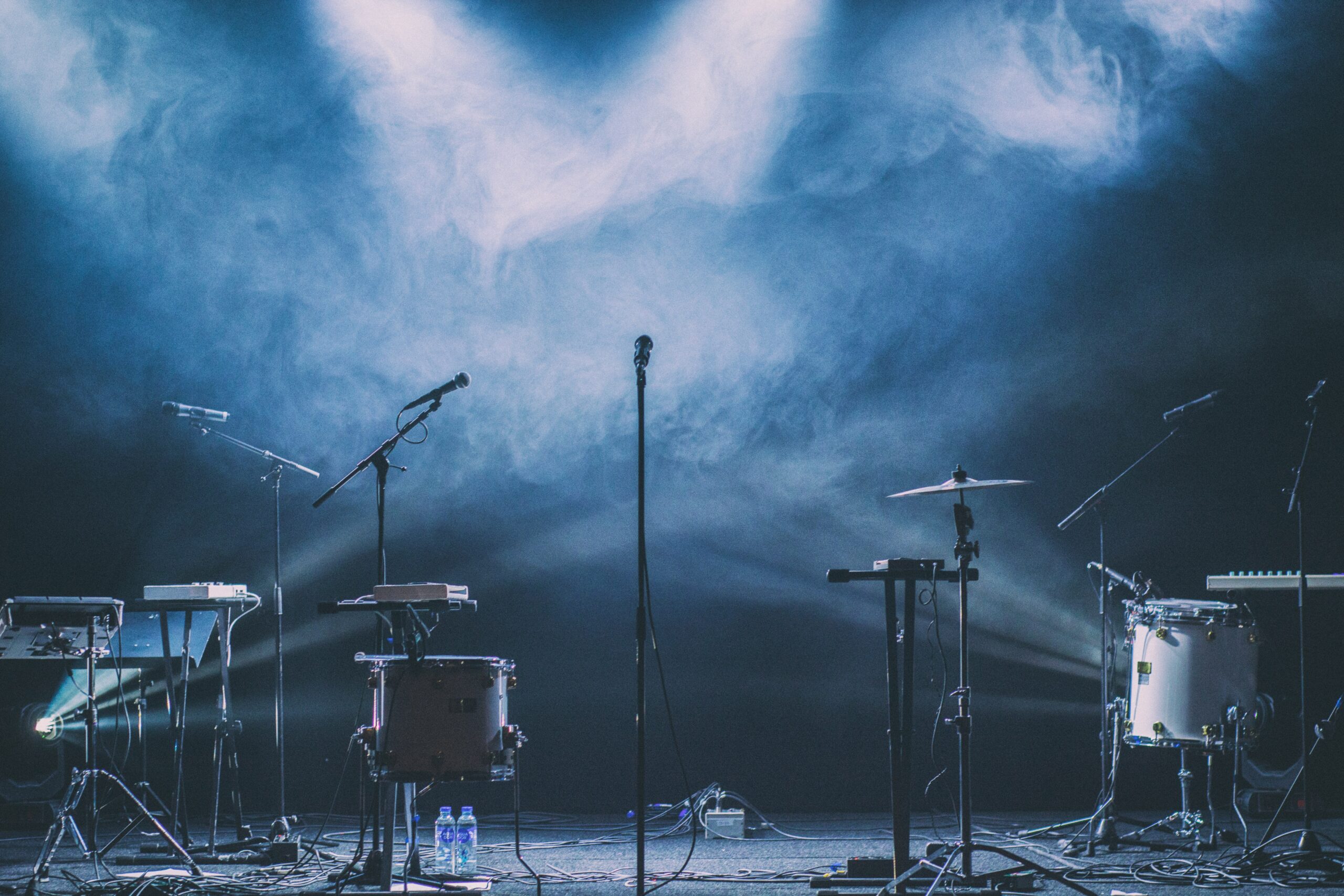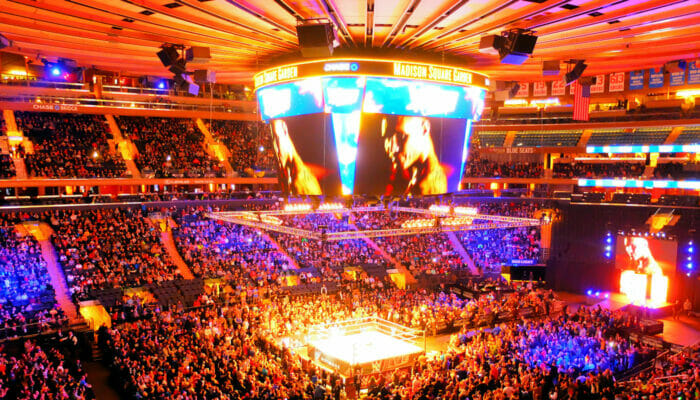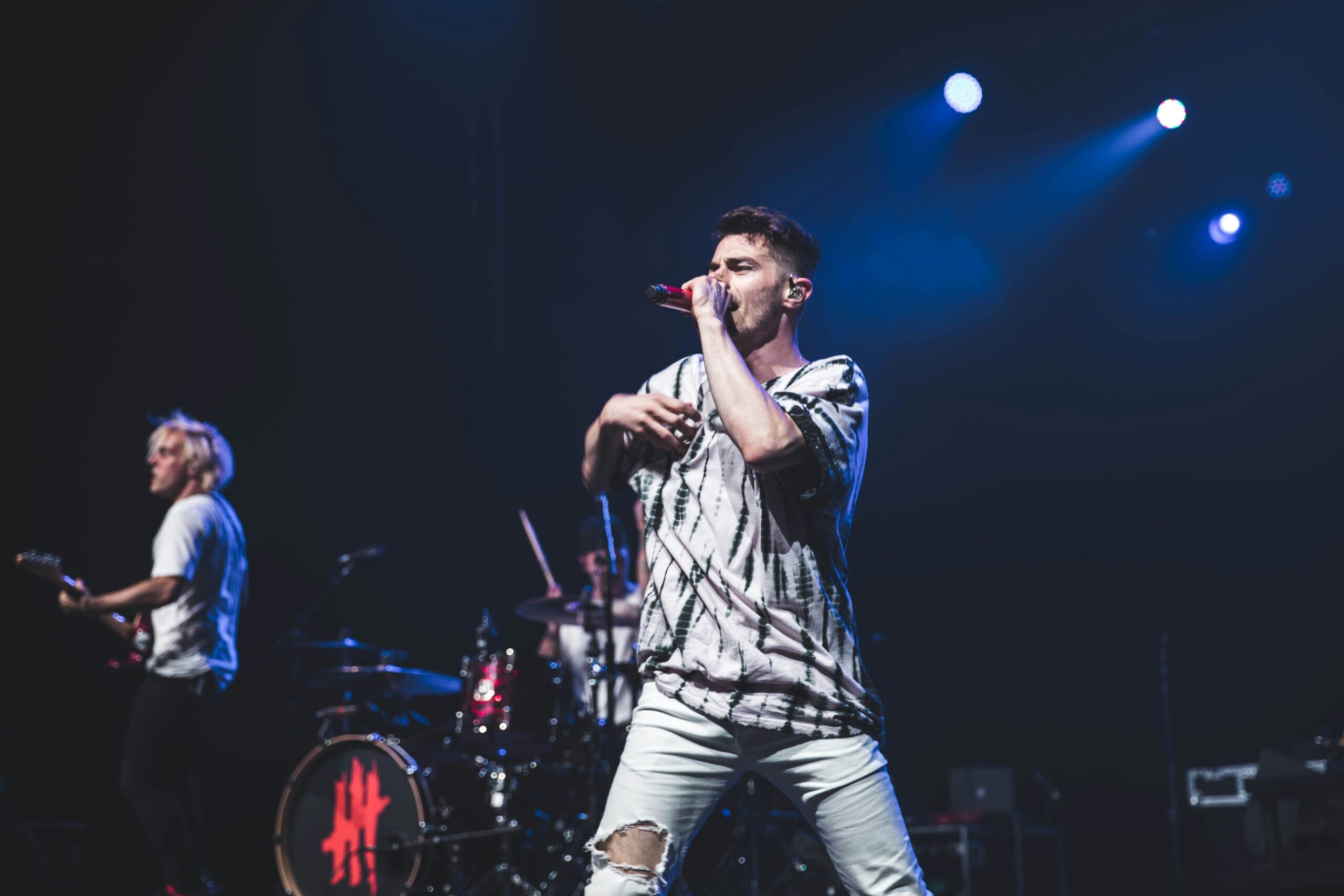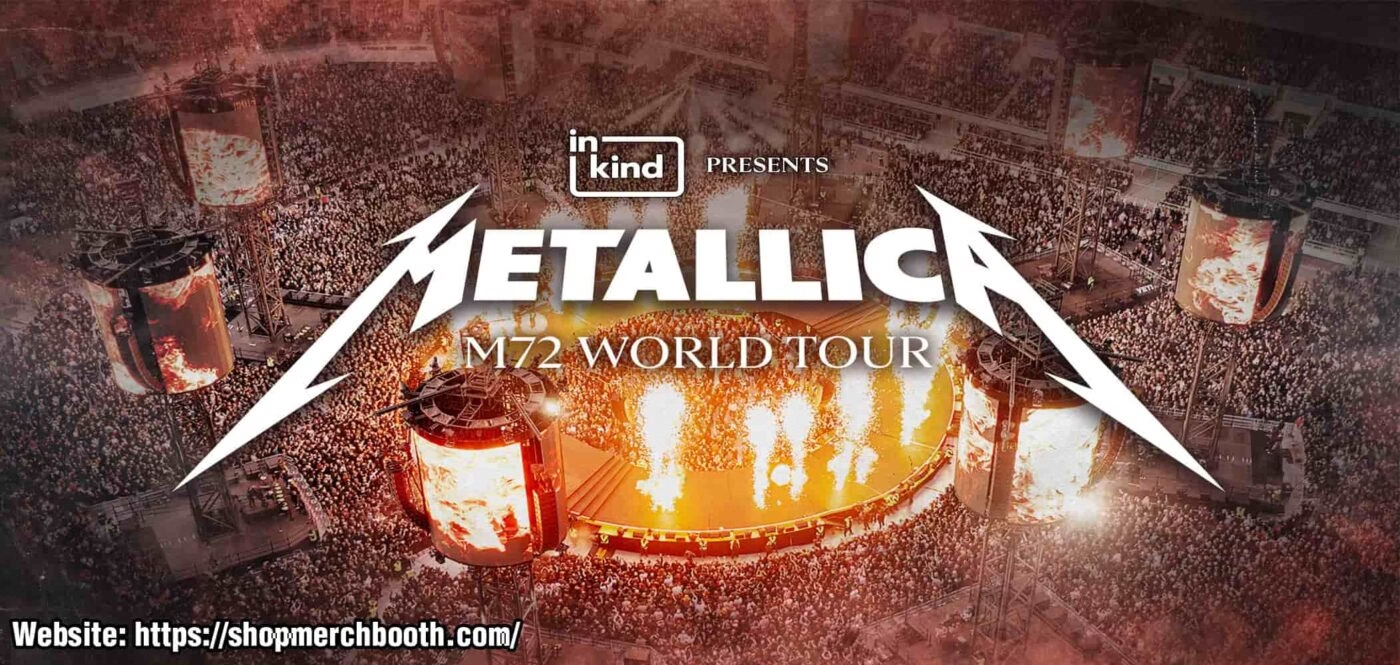
Introduction to America’s Live Music Scene
The United States has long been a global epicenter for live music, with venues across the nation serving as cultural touchstones that reflect the rich tapestry of American music. From jazz clubs in New Orleans to rock arenas in Los Angeles, each venue carries its own unique history and significance. The importance of these live music venues extends beyond just entertainment; they are essential components of community identity and local economies. Research indicates that live music contributes over $25 billion annually to the U.S. economy, supporting countless jobs and businesses that thrive on the vibrancy of performances.
Historically, live music venues have acted as platforms for emerging and established artists alike, shaping the music industry and influencing genres across the board. Venues that are synonymous with legendary performances, such as the Apollo Theater in Harlem or the Whisky a Go Go in West Hollywood, have not only launched countless careers but have also become ingrained in the cultural history of American music. These sites attract millions of attendees every year, fostering a shared experience among diverse audiences who come together to enjoy performances live.
In recent years, trends in live music have evolved considerably, propelled by advancements in technology, changes in consumer behavior, and the global pandemic’s impact. Outdoor festivals have gained popularity, offering expansive spaces for social distancing while still creating vibrant music experiences. Furthermore, streaming services have altered how artists approach live performances, leading many to employ innovative methods that blend in-person shows with virtual events. Such adaptations highlight the resilience of the live music scene, emphasizing the essential role that these venues play in the broader cultural landscape. Ultimately, the significance of America’s live music venues continues to resonate, bridging communities, driving economies, and nurturing the artistic expressions that define the nation.
Madison Square Garden: The World’s Most Famous Arena

Madison Square Garden, often referred to simply as “The Garden,” stands as one of the most iconic live music venues in the United States and indeed the world. Established in 1968, this multi-purpose indoor arena is located in Midtown Manhattan, New York City, and has a seating capacity of approximately 20,000 for concerts. Over the decades, it has become a pivotal destination for artists across multiple genres, from rock legends to pop sensations and beyond.
The venue’s history is rich and illustrious, showcasing an impressive array of performances that have etched themselves into the annals of music history. Notable artists who have graced its stage include the likes of Elvis Presley, Billy Joel, and Madonna, not only cementing their legacy but also contributing to The Garden’s reputation as a world-class performance space. In recent years, it has hosted major events such as the annual iHeartRadio Music Awards and numerous concerts from contemporary superstars, demonstrating its ongoing relevance in the live entertainment circuit.
Madison Square Garden has undergone various renovations to enhance the experience for both artists and attendees. The most recent refurbishment, completed in 2013, included modernized seating, upgraded sound systems, and enhanced sightlines, ensuring that every concert is a memorable experience. The venue accommodates a diverse range of events, not limited to concerts; it also hosts sports games, award shows, and even circuses, making it a vital cultural hub in New York City.
Despite the evolution of the music industry and the emergence of various performance spaces, Madison Square Garden continues to hold an iconic status. Its longstanding tradition, impressive roster of performances, and commitment to delivering unparalleled experiences contribute to its cultural significance and popularity as a premier live music venue in the U.S.
The Hollywood Bowl: A Slice of California Dreaming
The Hollywood Bowl, nestled in the heart of Los Angeles, is heralded as one of the most iconic live music venues in the United States. Its unique outdoor setting, surrounded by natural beauty and the stunning Hollywood Hills, creates an unforgettable atmosphere for music lovers. Opened in 1922, this venue has evolved considerably, accommodating a diverse range of performances while maintaining its classic charm and character.
Renowned for its exceptional acoustic capabilities, the Hollywood Bowl has hosted performances by some of the world’s most celebrated artists and orchestras. The venue’s design, featuring a distinctive shell structure, greatly enhances sound quality, making it a favorite for both performers and attendees. Numerous notable performances have taken place here, including those by legends such as Frank Sinatra, Ella Fitzgerald, and the Los Angeles Philharmonic. These rich musical traditions continue to attract audiences, ensuring that the Hollywood Bowl remains a vital part of the cultural fabric of Los Angeles.
In recent years, the venue has adapted to meet the changing dynamics of the music industry and audience expectations. The Hollywood Bowl has embraced a variety of genres, expanding beyond classical and traditional concerts to include contemporary music, popular artists, and innovative performances. Events such as “Movie Nights” that feature classic films accompanied by live orchestration have further solidified its reputation as a relevant and dynamic venue in today’s music scene. Moreover, the implementation of state-of-the-art audio-visual technology illustrates its commitment to providing a captivating experience for attendees. As the music landscape continues to evolve, the Hollywood Bowl stands firm as an enduring symbol of California’s vibrant music culture.
Red Rocks Amphitheatre: Nature Meets Music
Red Rocks Amphitheatre, nestled within the stunning Colorado landscape, is a remarkable venue that merges natural beauty and extraordinary acoustics. With its iconic sandstone formations standing majestically against the skyline, the amphitheatre is not just a concert venue; it is a natural wonder in which music and nature coalesce. This breathtaking setting has attracted music lovers and artists alike, making it a quintessential stop on any music enthusiast’s tour of the United States.
Established in the early 20th century, Red Rocks has a rich historical significance that dates back to the 1900s. It was first opened as a music venue in 1941, and since then, it has hosted countless legendary performances, featuring renowned artists from various genres. Its unique geological formations contribute to the venue’s remarkable acoustics, which enhance musical performances, ensuring that every note resonates perfectly with audiences. The amphitheatre’s natural stage, surrounded by towering red rocks, provides an unparalleled backdrop for live music, making it a sought-after location for artists striving to create unforgettable experiences.
In recent years, Red Rocks Amphitheatre has continued its legacy, hosting a diverse array of concerts and events that showcase both rising talents and major music icons. High-profile acts such as Dave Matthews Band, The Lumineers, and Tame Impala have graced its stage, drawing crowds from across the globe. These performances help solidify its status as a must-visit destination for both performers and fans. With its breathtaking ambiance and stellar acoustics, Red Rocks remains a cherished venue, creating lasting memories for generations of concert-goers and contributing to the rich fabric of live music culture in the United States.
The Fillmore: A Historic Venue with a Legacy
The Fillmore is a name synonymous with live music, embodying a rich history that has significantly influenced the music culture of the United States. Originally opened by Bill Graham in 1965, the San Francisco location quickly emerged as a haven for rock and psychedelic music, hosting some of the most transformative performances of the era. Artists such as Grateful Dead, Janis Joplin, and Jefferson Airplane graced its stage, making The Fillmore an essential landmark for music enthusiasts. The ambiance, characterized by its historic architecture and intimate setting, allows audiences to experience live performances in a unique way that fosters a deep connection between the artists and their fans.
The Fillmore concept has expanded beyond San Francisco, with locations in cities like New York, Philadelphia, and Charlotte, yet each maintains the same foundational principles of promoting diverse musical talent. These venues honor their predecessors through their design, musical programming, and commitment to showcasing everything from emerging artists to established legends. The dedication to upholding the original legacy of The Fillmore is visible in each venue’s efforts to create a welcoming atmosphere while delivering memorable live music experiences. Each iteration continues to encapsulate the spirit of rock and soul, which started in the 1960s.
In recent years, The Fillmore has remained relevant by embracing a variety of musical genres and celebrating modern music trends. Notable performances include shows by stars like Chance the Rapper and Billie Eilish, highlighting its ongoing significance in the contemporary music scene. Additionally, The Fillmore has adapted to the digital age, utilizing platforms that amplify the reach of its events, ensuring that it remains at the forefront of live music culture. As we reflect on its storied past, it becomes increasingly evident that The Fillmore is not merely a venue; it is a veritable institution that has indelibly shaped the landscape of American music.
Wrigley Field: Beyond Baseball – A Musical Haven
Originally known as a historic baseball stadium, Wrigley Field has undergone a significant transformation over the years, evolving into a prominent music venue that attracts diverse audiences from across the United States. This architectural gem in Chicago has hosted an array of concerts that have left a lasting impact on its cultural landscape while providing a platform for world-renowned artists.
In recent years, Wrigley Field has welcomed major music events, featuring performances from renowned musicians and bands, establishing itself as a significant player in the live music scene. Concerts by notable acts such as Pearl Jam, The Strokes, and Billy Joel have turned the venue into a sought-after location for music enthusiasts. Each performance at Wrigley Field is imbued with the essence of the city’s vibrant culture, as attendees experience a unique blend of sports history and musical artistry. The distinct atmosphere of the venue contributes to the overall fan experience, making each concert memorable.
These events also play a crucial role in bolstering the local economy. Concerts at Wrigley Field drive tourism, as visitors flock to the area not only for the music but also to enjoy local restaurants, bars, and shops. The influx of attendees generates essential revenue for nearby businesses while enhancing community engagement through cultural exchange and shared experiences. Furthermore, artists engaging with the Chicago community often bond deeply with their fans, fostering connections that extend beyond a single performance. This interaction not only enriches the artist’s experience but also instills a sense of pride among the local audience.
As Wrigley Field continues to embrace its dual identity as both a baseball stadium and a celebrated music venue, it solidifies its position within the broader narrative of American culture, showcasing the power of live music to transcend boundaries and bring communities together.
The Gorge Amphitheatre: A Stunning Natural Venue
The Gorge Amphitheatre, located in George, Washington, is renowned for its breathtaking scenery and unique setting. Nestled along the Columbia River, the venue offers panoramic views of dramatic cliffs and a vast expanse of open sky, making it one of the most picturesque locations for live music in the United States. Opened in 1986, the amphitheatre has established itself as a premier destination for concert-goers and music festivals, earning accolades for its extraordinary atmosphere and acoustic excellence.
This iconic venue is particularly famous for hosting the Sasquatch! Music Festival, a multi-day event that showcases an impressive lineup of artists across various genres. The festival attracts thousands of attendees each year, all drawn by the combination of top-notch performances and the natural beauty of the Gorge. Notable acts such as Dave Matthews Band, Radiohead, and Mumford & Sons have graced the stage, each contributing to the amphitheatre’s rich history of unforgettable concerts.
The Gorge’s layout features seating for approximately 27,000 guests, allowing fans to enjoy live music in an immersive environment. At the same time, the design ensures that every seat provides an unobstructed view of the stage, enhancing the overall concert experience. Recent trends have seen an increase in diverse performances, including electronic music and indie rock, attracting a wider audience and solidifying its reputation as a versatile venue for both emerging and established artists.
Beyond the music, visitors often rave about the on-site camping options and engaging pre-show activities, which foster a sense of community among concert-goers. As a result, the Gorge Amphitheatre has become not just a concert venue, but a destination for those who appreciate the interplay of art and nature. With each passing year, the amphitheatre continues to captivate audiences with its stunning landscape and electrifying performances, making it a must-visit for music lovers in the Pacific Northwest.
The Ryman Auditorium: The Mother Church of Country Music
The Ryman Auditorium, often referred to as the “Mother Church of Country Music,” holds a prominent place in the landscape of American music venues. Originally built as a tabernacle in 1892, this historic structure has undergone a remarkable transformation into a celebrated concert hall. Its significance is deeply rooted in its rich history, serving not only as a place of worship but also as a cultural hub for music enthusiasts.
Architecturally, the Ryman Auditorium boasts stunning design elements that blend Gothic and Romanesque styles, with its iconic stained-glass windows and soaring wooden rafters. The auditorium is renowned for its exceptional acoustics, which has made it a favored location for musicians across various genres. From its inception, it has hosted numerous legendary performers, making it a beacon for those who appreciate live music. This venue played a pivotal role in the emergence of country music as a popular genre, especially during the 1940s and 1950s when it became the home of the Grand Ole Opry, providing a platform for groundbreaking country artists.
In recent years, the Ryman has continued to thrive as a vital part of Nashville’s vibrant music scene. It regularly features a diverse lineup of contemporary musicians and hosts special events that celebrate both the past and present of American music. The venue’s dedication to preserving its historical significance while promoting new talent ensures its relevance in today’s cultural landscape. Through ongoing renovations and community engagement, the Ryman Auditorium remains not just a relic of history but a lively participant in the evolving narrative of music in the United States.
Forest Hills Stadium: A Hidden Gem in New York
Located in the vibrant Forest Hills neighborhood of Queens, New York, Forest Hills Stadium has a storied history dating back to its inception in 1923. Originally built as a tennis stadium, it became a prominent concert venue during the 1960s, hosting legendary performances by artists such as The Beatles, Bob Dylan, and Simon & Garfunkel. Despite its rich past, the stadium fell into a period of disuse and underwent various phases of renovation until its revival in recent years.
The resurgence of live events at Forest Hills Stadium can be attributed to a dedicated effort to restore and enhance its standing as a premier music venue. With its unique open-air setting, the stadium combines a classic aesthetic with modern amenities, allowing for an intimate yet grand experience for concertgoers. The venue’s capacity of approximately 13,000 allows it to host a range of artists, attracting both big-name acts and emerging talent alike.
Recent performances at Forest Hills Stadium have reinforced its status as a favorite location for artists. Notable acts, including the likes of The Killers, Kings of Leon, and Norah Jones, have graced its stage, showcasing the venue’s ability to attract diverse genres. The charm of the stadium lies not only in its historical significance but also in the unique atmosphere created by its lush surroundings, providing an unforgettable backdrop that enhances the live music experience.
As music enthusiasts continue to seek out authentic venues, Forest Hills Stadium stands out as a hidden gem within the bustling New York City concert scene. Its successful revival is a testament to the commitment of those dedicated to preserving its legacy, ensuring that future generations can enjoy the magic of live performances in this iconic setting.
Conclusion: The Future of Live Music Venues
The landscape of live music venues in the United States is undergoing significant transformation, driven by both technological advancements and the lingering effects of recent global events. As we look toward the future, it is crucial to reflect on the importance of these iconic spaces that have shaped the cultural fabric of American music. They are not merely locations for performances but represent community hubs where shared experiences and memories are created. Preserving these venues is essential, as they provide a unique atmosphere that cannot be replicated in virtual environments.
While technology offers innovative ways for artists to reach their audiences, such as virtual concerts and live streaming, it cannot replace the palpable energy that exists in a live setting. These iconic venues are characterized by their resilience and adaptability. Many are embracing hybrid models that combine traditional live experiences with digital enhancements, allowing for greater audience engagement and accessibility. Innovations such as augmented and virtual reality may indeed shape future performances, enabling audiences to interact with artists and music in unprecedented ways.
Additionally, the future of live music venues will require a renewed focus on inclusivity and sustainability. Artists and venue operators alike are beginning to prioritize diverse line-ups and environmentally responsible practices, which reflect the evolving values of audiences. As the public’s appetite for live performances continues to grow, it is vital for operators to create safe, welcoming spaces that cater to diverse demographics.
In conclusion, while the challenges facing live music venues are formidable, so too are the opportunities for evolution and growth. By embracing innovation and championing the preservation of these cultural landmarks, stakeholders can ensure that live music continues to thrive in the U.S. for generations to come.
![]()




I’m really enjoying the design and layout of your site.
It’s a very easy on the eyes which makes
it much more pleasant for me to come here and visit more often.
Did you hire out a designer to create your theme? Excellent work!
Appreciate you making time to check on my blogs. Have a great day!
I am actually delighted to glance at this blog posts which carries tons of valuable information, thanks for providing these information.
Appreciate you making time to check on my blogs. Have a great day!
Everything is very open with a very clear explanation of
the issues. It was definitely informative. Your site is useful.
Thank you for sharing!
Appreciate you making time to check on my blogs. Have a great day!
I read this post completely about the difference of hottest and earlier technologies, it’s remarkable article.
Appreciate you making time to check on my blogs. Have a great day!
I every time used to study post in news papers but now as I am a user
of internet thus from now I am using net for articles, thanks to web.
What’s up, aftdr reading this amazing article i am too
delighted to share my know-how here with mates.
Feeel feee to visit my webpage 福岡市薬院 整骨院
I think the admin of this site is in fact working hard in favor of his web page,
for the reason that here every data is quality based data.
Hi! I’ve been reading your weblog for a while now and
finally got the bravery to go ahead and give you a shout out from Kingwood Texas!
Just wanted to tell you keep up the excellent work!
Also visit my web-site … deven sanon
Asking questions are truly nice thing if you
are not understanding anything completely, however this article offers good understanding even.
For most recent information you have to pay a visit
world wide web and on internet I found this web page as a best site for latest updates.
Hi, I do believe this is an excellent site.
I stumbledupon it 😉 I am going to return once again since I
saved as a favorite it. Money and freedom is the greatest way to change,
may you be rich and continue to guide others.
I was recommended this website by my cousin. I’m not sure whether this post is written by him as
no one else know such detailed about my problem. You’re incredible!
Thanks!
Spot on with this write-up, I seriously think this amazing site needs much more attention. I’ll probably be returning to see more,
thanks for the advice!
Hi there, You’ve done an excellent job. I’ll certainly digg it and personally recommend to my friends.
I’m sure they will be benefited from this website.
Thank you very much
Greetings I am so delighted I found your webpage, I really found
you by mistake, while I was searching on Digg for something else, Anyways I am
here now and would just like to say many thanks for a tremendous post and a all round
exciting blog (I also love the theme/design), I don’t have time to read
it all at the minute but I have bookmarked it and also added
your RSS feeds, so when I have time I will be back to read much more,
Please do keep up the superb jo.
Also visit my web page – deven sanon
92kxqn
I got this website from my pal who informed me on the topic of
this website and at the moment this time I am browsing
this website and reading very informative content at this place.
My spouse and I stumbled over here by a different web page and thought I may as well check
things out. I like what I see so i am just following you.
Look forward to looking at your web page again.
Hey I know this is off topic but I was wondering if you knew of any widgets I
could add to my blog that automatically tweet my newest twitter updates.
I’ve been looking for a plug-in like this for quite some time and
was hoping maybe you would have some experience with something like this.
Please let me know if you run into anything. I truly enjoy reading your blog
and I look forward to your new updates.
Hi there I am so thrilled I found your webpage, I really found you by accident, while
I was researching on Bing for something else, Regardless I am here now and would just like to say thanks for a remarkable post and a all round entertaining blog (I also love the theme/design), I don’t have time to go through it all at the minute but I have saved it and also added your
RSS feeds, so when I have time I will be back to read a great deal more,
Please do keep up the fantastic work.
Your style is really unique compared to other people I have read
stuff from. Many thanks for posting when you have the opportunity,
Guess I’ll just book mark this blog.
I visited various blogs except the audio feature for audio songs present at this web page is in fact fabulous.
Does your website have a contact page? I’m having problems locating it but, I’d like
to send you an email. I’ve got some ideas for your blog you might be
interested in hearing. Either way, great site and I look forward to seeing it grow over time.
I feel that is one of the most significant information for me.
And i’m glad reading your article. But should statement on some common issues, The web site style is
wonderful, the articles is actually great :
D. Good process, cheers
I take pleasure in, lead to I found just what I was looking for.
You have ended my 4 day lengthy hunt! God Bless you man. Have
a nice day. Bye
What i don’t realize is if truth be told
how you are no longer actually a lot more smartly-preferred than you may be right now.
You are very intelligent. You know thus significantly in the case of this
topic, made me for my part believe it from so many numerous angles.
Its like women and men aren’t interested unless it’s one thing to do with Lady gaga!
Your individual stuffs nice. All the time deal with it up!
Hi there, I would like to subscribe for this
blog to obtain most recent updates, therefore where can i do it please help.
Hi there to every one, since Iam really eager of reading
this blog’s post to be updated on a regular basis.
It consists of pleasant material.
Hi there, I do think your website could be having browser
compatibility issues. Whenever I look at your website in Safari, it looks fine but when opening in IE, it has some
overlapping issues. I just wanted to provide you with a quick heads
up! Aside from that, fantastic website!
Thanks for another informative website. The place else may just I am getting that kind
of information written in such an ideal method?
I have a mission that I’m simply now working on, and I have been on the glance out for such info.
Hi there, just became alert to your blog through Google,
and found that it’s really informative. I’m gonna watch out
for brussels. I will appreciate if you continue this in future.
A lot of people will be benefited from your writing. Cheers!
When someone writes an piece of writing he/she retains
the idea of a user in his/her brain that how a user can understand it.
So that’s why this paragraph is outstdanding. Thanks!
If you desire to grow your knowledge just keep visiting this web
page and be updated with the most recent information posted here.
What’s up, yes this post is really fastidious and I
have learned lot of things from it concerning blogging.
thanks.
I read this post fully about the resemblance of latest and previous
technologies, it’s amazing article.
At this time it seems like Movable Type is the top blogging platform available right now.
(from what I’ve read) Is that what you are using on your blog?
Quality content is the key to invite the visitors to
visit the web page, that’s what this web site is providing.
Hey! Someone in my Facebook group shared this site with us so
I came to take a look. I’m definitely enjoying the information. I’m book-marking and will be tweeting
this to my followers!Superb blog and terrific design.
Why people still use to read news papers when in this technological globe everything is presented on net?
What a stuff of un-ambiguity and preserveness of valuable familiarity regarding unexpected feelings.